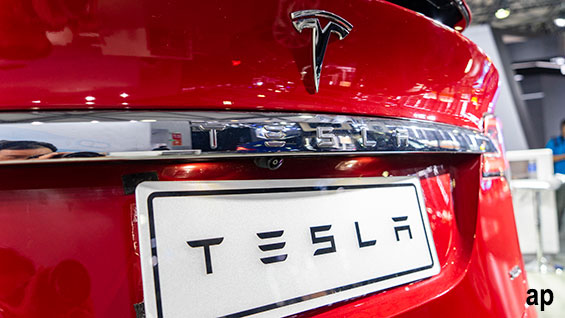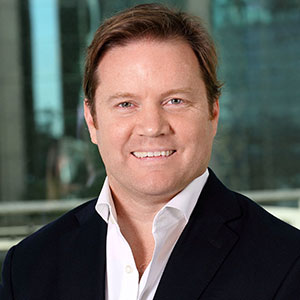
Electric vehicle pioneer Tesla (TSLA) received somewhat of a turbocharge earlier this month when the International Panel on Climate Change (IPCC) announced the faster adoption of EVs and hybrid cars was crucial to curbing the effects of global warming.
Global emissions must fall 45% from 2010 levels by 2030 or we’re in trouble, the IPCC warned. For Elon Musk, Tesla’s eccentric founder, the news must have provided even more relief than the emissions coming from joint he was seen smoking on public radio in the weeks before.
For Musk, who had until then been in hot water with US regulators for threatening to take his company private, the IPCC’s climate warning must have been a surreal moment: here was a global government body calling for reforms that would profoundly boost his company’s fortunes. And not just his company but others in the EV business.
But while the wheels may be in motion for EVs, the revolution is far from complete. On Australian roads at least, the Tesla—in its sleek iterations, the Model S and Model X—is still a novel sight, overwhelmingly outnumbered by the humble internal combustion engine (ICE). But for Morningstar analyst Seth Goldstein change is afoot.
Over the next decade, battery vehicles will be able to cover longer distances, and take less time to charge, eventually closing the gap on petrol-powered cars. “Charging infrastructure, which dictates range capabilities, will be the regional wild card that will either spur or limit EV adoption,” Goldstein says.
Tesla so far leads the race. Its battery-charging stations are proliferating, and its cheaper mass-market sedan, the $50,000 Model 3, is set to be on the road next year.
And its rivals are catching up, too. “We forecast EVs will make up 15% of global auto sales in 2028, above the consensus forecast of 11%,” Goldstein says. “We forecast hybrids to make up 21% of global auto sales in 2028, which would make EVs and hybrids 36% of total vehicles.”
For a better grip on the EV revolution and the investment case for it, it’s worth looking at the regulatory forces that are accelerating the adoption of this new technology. As Goldstein notes, over the past couple of years, regulations have evolved from being predominantly based on fuel efficiency standards to EV mandates. And it’s the regions with EV-specific regulations and incentives that will propel EV adoption.
Tightening fuel standards in the European Union will push carmakers to electrification over the next decade, while fragmented policies in the US that vary between jurisdictions will have a mixed impact. In China, however, government is working with carmakers to fast-track the transformation. For Beijing, electrification is a way to combat the country’s prodigious pollution and curb the reliance on oil exports.
China: Driving Demand for Electric Vehicles
The forecast growth in EVs is largely driven by demand in China. At both a government and private enterprise-level, China sees electrification as a clear road ahead, and currently leads the world in production and sale of EVs.
Almost 72,000 passenger electric vehicles were sold in China in April, an increase of 136% from the previous year, and almost four times as many as were sold in the US.
Veteran China observer Jack Perkowski, a former Wall Street investment banker who used to run ASIMCO Technologies, an independent car parts company in Beijing notes under the new energy vehicle subsidy scheme, China’s central and local governments spent $7.7 billion on EV subsidies in 2017.
The incentives are simple: the further a car can travel, the greater the subsidy. A car with a 400km range gets the top subsidy, whereas a car that can only cover 150km in one charge gets nothing. You get the picture: carmakers are being encouraged to make EVs travel further.
And that’s just cars. The figures for public buses are even more illuminating. In 2011, just over 1000 electric buses were sold. Five years later, with the help of subsidies, this figure had risen to 132,000, Perkowski says.
“While electric bus sales in China were slightly lower last year as a result of cuts in the electric bus subsidy programme, 99% of the 352,000 electric buses on the road globally are running on China’s streets and roads. There are now over 30 companies making electric buses in China.”
Little wonder then China has forecast EVs will total two million vehicles in 2020, and up to seven million in 2025. And while it’s hoped the EVs will keep going, the subsidies won’t. China has stated its subsidies for new energy vehicles will end by 2020. From 2016 levels they have been cut be 20% per year and will fall by 40% to zero in 2019.
Tesla: Fair Value Upgrade for EV Pioneer
It’s perhaps no surprise then Musk is building a Tesla production plant in Shanghai as part of his ambition to roll out one million cars by 2020. A case of more talk than torque? Maybe, says Morningstar sector strategist David Whiston, especially when you consider the company sold only about 103,000 vehicles globally in 2017. But still, there are reasons to be bullish.
Tesla is heading to the desert in Nevada to build its “gigafactory 1”—a lithium-ion battery plant as part of its plan to produce at least 500,000 vehicles at its sole assembly plant in Fremont, near San Francisco. This production schedule has prompted Whiston to raise his fair value estimate for the company by 24%, from $179 to $222.
While he concedes global mass adoption of pure EVs is about a decade away, Whiston reckons the force of Tesla’s brand has the potential to be to electric vehicles what Coke is to soft drink and what Google is to search.
As for the product itself, EVs are fun to drive because the instant torque means they’re always at full power. But the most pressing concern for those contemplating an EV is what the boffins call “range anxiety”. In short, how far can you drive before the thing conks out?
Tesla has the edge for now due to the long-range technology of its vehicles and its expanding network of charging stations. The 100D kWh battery in the Model S—the most common EV on Australian roads—allows it to cover 335 miles, compared to 238 miles for the Chevrolet Bolt, 150 miles for the Nissan Leaf, and 180 miles for the BMW i3.
Tesla has over 1350 Supercharger stations globally with more than 11,000 outlets and is increasing the number quickly.
As for the cost of a trip, according to Tesla, driving 1500km in a Model S would cost $97, whereas the same trip in a petrol-powered car would cost $133.
And then there’s filling up. It takes about 30 minutes to charge a Tesla battery to 80% and about 75 minutes for a full charge. As Whiston notes, those who regularly travel long distances may find the recharge time too long, compared with the roughly five-minute refuelling time for an ICE.
To circumvent this, Tesla sells wall connector chargers for the garage at home, which cost $500 and can fully recharge the battery in about six hours. The thought of never having to queue at the petrol station may be too good for some to refuse. “The cost advantage of recharging over gasoline is significant,” Whiston says, “and gas will probably never be able to catch up.”
But are these factors enough to warrant a moat, in other words, a sustainable competitive advantage? Whiston thinks not. Tesla’s competition is the entire auto industry rather than just EVs, he says. And Musk himself concurs. “Our true competition,” he wrote in 2014, “is the enormous flood of gasoline cars pouring out of the world’s factories every day.”
The Model S’s EPA range of 335 miles for the 100D kWh battery - this car starts at about $100,000 - is less than the single-tank range of the Toyota Camry, which is about 500 miles, or the 494-mile range of the BMW 7 Series tank. Crucial too are the driving conditions, which can curb endurance. Using the heater, for instance, can diminish the Model S’s range by up to 25%.
In short, investing in Tesla carries “tremendous uncertainty”, Whiston says. Mass EV adoption may take longer than Tesla anticipates. If demand stalls, the company will struggle to recoup the costs of the gigafactory. And rivals may catch up.
The company is also early in its cycle, is carrying a lot of debt following its acquisition of SolarCity—a solar panel firm—and will face a vast expansion of capital spending as it adds new models and new capacity. And then there’s the threat of recession, which Whiston reckons is bound to occur during Tesla’s growth phase.
On top of that, there’s the “key man risk” of Musk. He may be a visionary but his erratic behaviour can make investors nervous.
Investing in Electric Vehicles
Albemarle (ALB)
Albemarle is one of the world’s largest lithium producers. Our outlook for robust lithium demand is predicated upon increased demand for electric vehicle batteries. Albemarle produces lithium from its salt brine deposits in Chile and the US and its hard rock joint-venture mine in Australia. Albemarle is also a global leader in the production of bromine, used in flame retardants, and oil refining catalysts.
BMW (BMW)
In addition to being one of the world’s leading premium light-vehicle manufacturers, BMW Group produces BMW motorcycles and provides financial services. Premium light-vehicle brands include BMW, Mini, and ultraluxury brand Rolls-Royce. Operations include 24 production facilities in 13 countries, with a sales network reaching 140 countries. Worldwide annual volume exceeds two million automobiles and over 120,000 motorcycles.
BorgWarner (BWA)
BorgWarner is a Tier I auto-parts supplier with two operating segments. The engine group makes turbochargers, emissions system components, timing chains, and other items that enhance fuel efficiency and reduce emissions.
Engine group products have averaged about 70% of group sales. Drivetrain group produces transmission and four-wheel-drive/all-wheel-drive system components that facilitate the distribution of engine torque to the wheels. Wet dual-clutch products enable more fuel-efficient automotive transmissions.
Edison International (EIX)
Edison International is the parent company of Southern California Edison, an electric utility supplying power to five million customers in a 50,000-square-mile area of Southern California, excluding Los Angeles. Edison Energy owns interests in nonutility businesses dealing in energy-related products and services. In late 2012, Edison International’s wholesale generation subsidiary Edison Mission Energy entered Chapter 11 bankruptcy, and in 2014, it was sold to NRG Energy.
General Motors (GM)
General Motors Co. emerged from the bankruptcy of General Motors Corp. (old GM) in July 2009. GM has eight brands and operates under three segments: GM North America, GM International, and GM Financial. The US now has four brands instead of eight. The company remains the market leader in the US with 17.4% share. GM Financial became the company’s captive finance arm in October 2010 via the purchase of AmeriCredit.
































